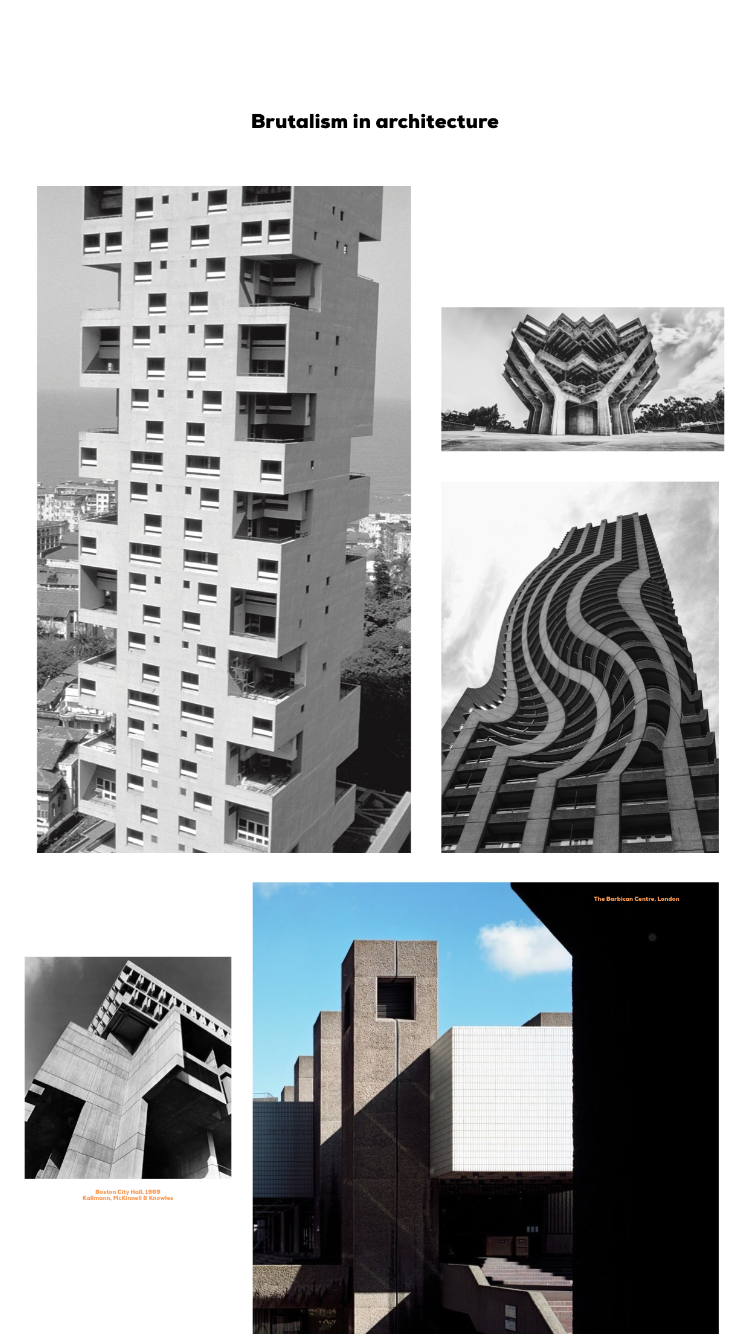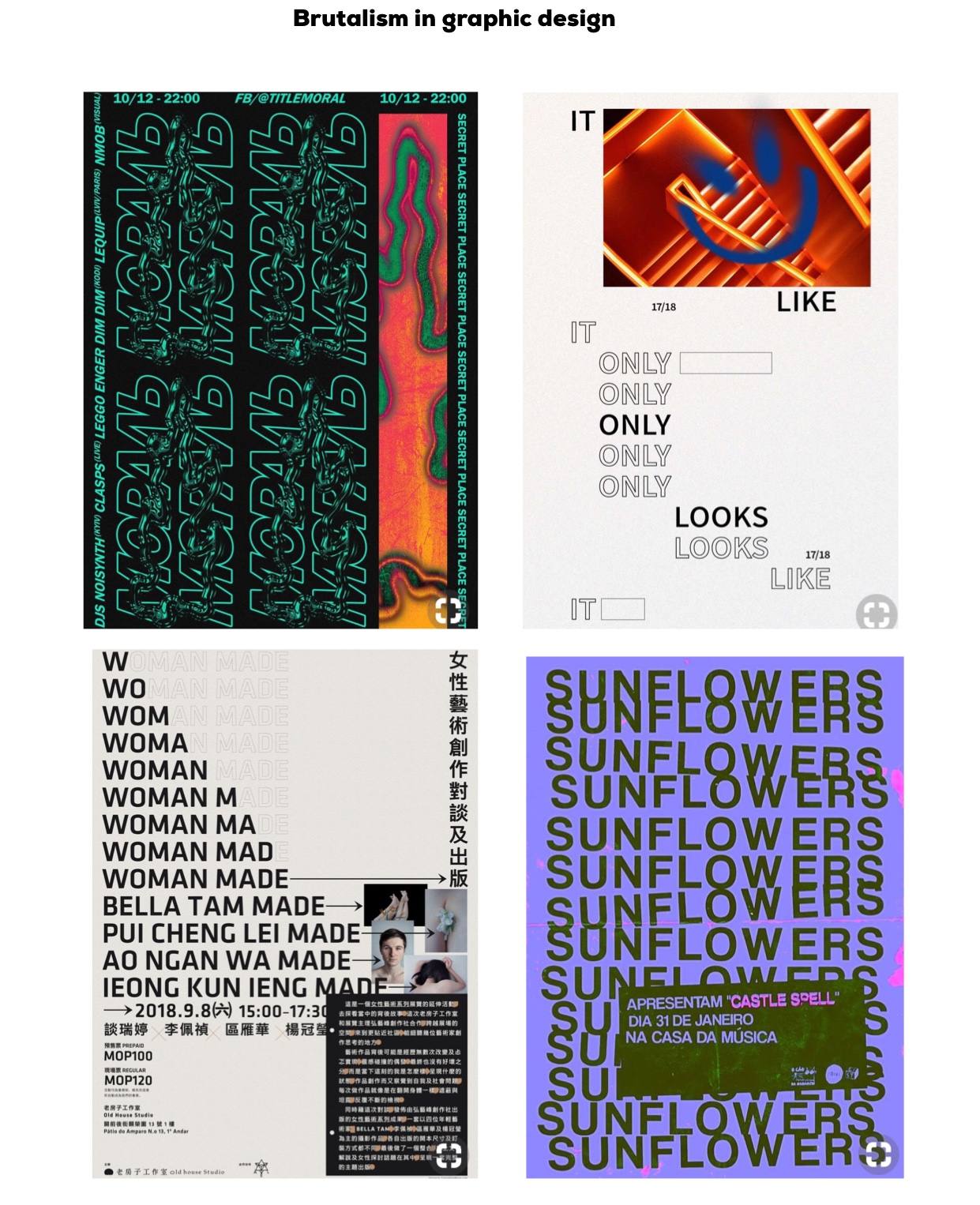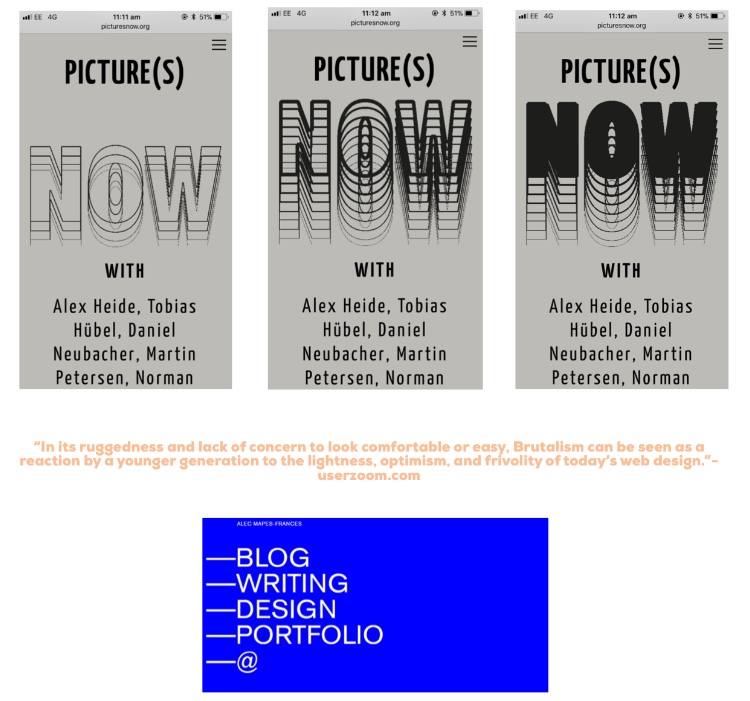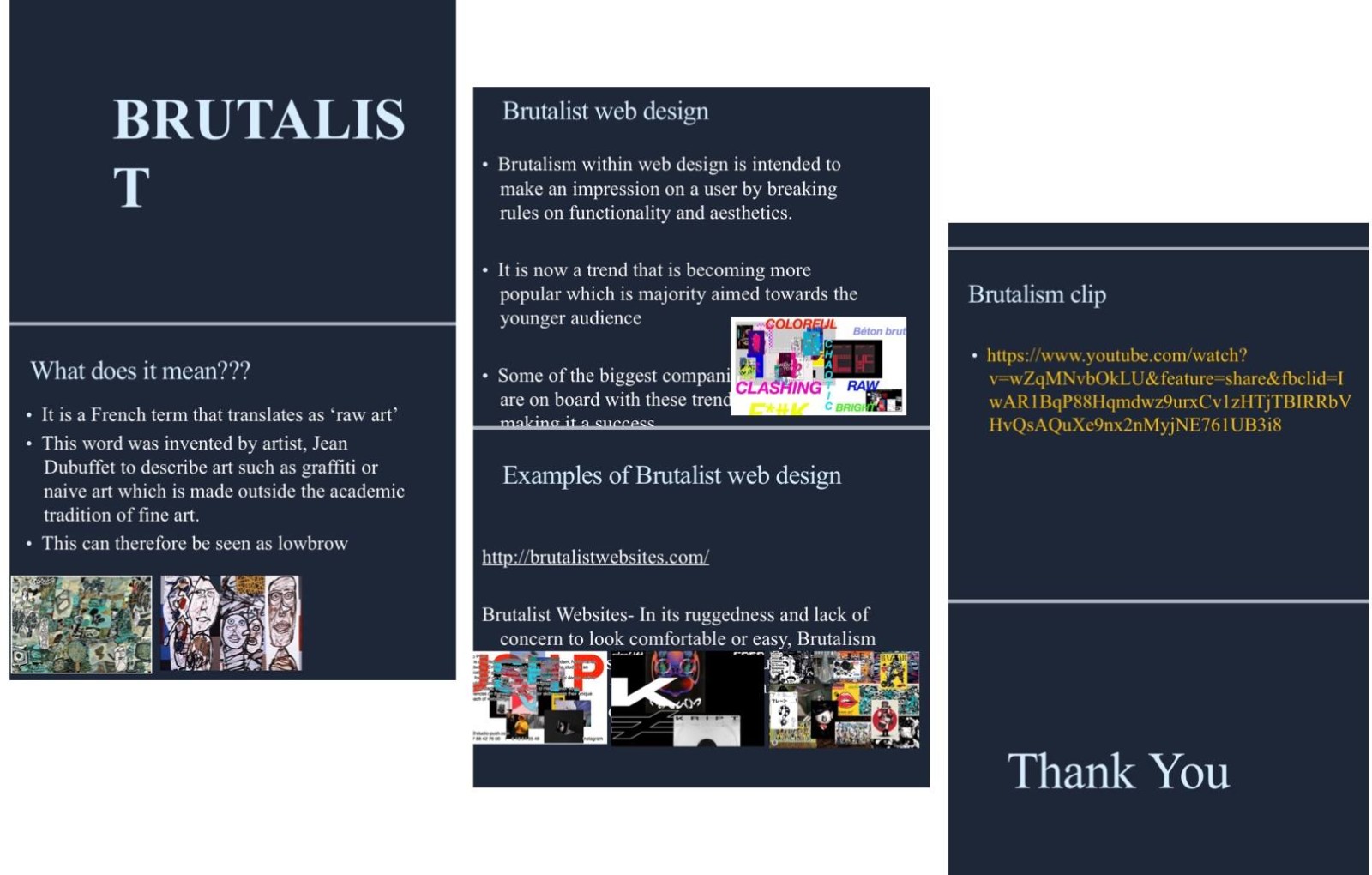

Brutalist architecture descended from the modernist architectural movement of the early 20th century and flourished between the years of 1951 to 1975. Brutalist designs are dictated by function over form with mundane functions and raw construction left exposed.
The architectural style of Brutalism has divided opinion for decades with many dismissing brutalist buildings as ‘monstrosities’.
The Boston City Hall, as an example, was subject to frequent disapproval and cries to tear it down despite continually making the ‘best of’ architecture lists.
‘Brutalist architects developed a style that didn’t care for comfort or easy-on-the eye aesthetics – instead these buildings are stark and minimalist, and perhaps more importantly – you can see exactly what materials they’re made from and often the inner workings are exposed. Their ‘confrontational’ appearance is a byproduct of these materials and their form.’ – userzoom.com



The return of Brutalism in design is reminiscent of the early days of the web, where websites were brutal because they had to be.
Brutalism in graphic design is not a subtle design technique. Characteristics of brutalist design can include elements like stark backgrounds, crowded design, overlapping elements and a lack of symmetry or spacing – again, often dictated by functionality over form.

